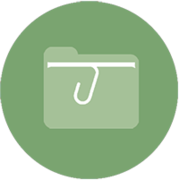Différences entre versions de « Simple Past »
| Ligne 11 : | Ligne 11 : | ||
<!-- ****************** Commercez les modifications ************************--> | <!-- ****************** Commercez les modifications ************************--> | ||
| − | + | [[Passé simple]] ([[Français]]) / [[Simple past]] ([[Anglais]]) / [[الماضي البسيط]] ([[Arabe]]) / [[Pretérito simple]] ([[Espagnol]]) / [[Passado simples]] ([[Portugais]]) / [[Простое прошедшее время]] ([[Russe]]) / [[Passato semplice]] ([[Italien]]) / [[Präteritum]] ([[Allemand]]) / [[一般过去时]] ([[Chinois (Mandarin)]]) / [[साधारण भूतकाल]] ([[Hindi]]) / [[単純過去]] ([[Japonais]]) / [[সরল অতীত কাল]] ([[Bengali]]) / [[Past simpel]] ([[Néerlandais]]) / [[Simples passado]] ([[Grec]]) | |
| − | [[Passé simple]] ([[Français]]) / [[Simple | ||
}}<!-- ************** Fin Fiche Didactique Traduction ********************* --> | }}<!-- ************** Fin Fiche Didactique Traduction ********************* --> | ||
| Ligne 21 : | Ligne 20 : | ||
<!--************************* Début Fiche-Disciplines-Thématiques *************************************--> | <!--************************* Début Fiche-Disciplines-Thématiques *************************************--> | ||
{{Fiche-Disciplines-Thématiques <!-----------------------------------------------------------------------> | {{Fiche-Disciplines-Thématiques <!-----------------------------------------------------------------------> | ||
| − | |||
| − | |||
| − | |||
| − | |Domaine-Discipline-Thématique-1= | + | |Domaine-Discipline-Thématique-1= Grammaire |
| − | |Domaine-Discipline-Thématique-2= | + | |Domaine-Discipline-Thématique-2= Linguistique |
| − | |Domaine-Discipline-Thématique-3= | + | |Domaine-Discipline-Thématique-3= Apprentissage des langues |
| − | |Domaine-Discipline-Thématique-4= | + | |Domaine-Discipline-Thématique-4= Anglais |
| − | |Domaine-Discipline-Thématique-5= | + | |Domaine-Discipline-Thématique-5= Conjugaison |
| − | |Domaine-Discipline-Thématique-6= | + | |Domaine-Discipline-Thématique-6= Phonétique |
| − | |Domaine-Discipline-Thématique-7= | + | |Domaine-Discipline-Thématique-7= Rédaction en anglais |
| − | |Domaine-Discipline-Thématique-8= | + | |Domaine-Discipline-Thématique-8= Compréhension écrite |
| − | |Domaine-Discipline-Thématique-9= | + | |Domaine-Discipline-Thématique-9= Expression orale |
| − | |Domaine-Discipline-Thématique-10= | + | |Domaine-Discipline-Thématique-10= Tense usage |
}}<!--****************** Fin modifications: Fiche-Disciplines-Thématiques *****************************--> | }}<!--****************** Fin modifications: Fiche-Disciplines-Thématiques *****************************--> | ||
| Ligne 41 : | Ligne 37 : | ||
| − | |||
{{Fiche Didactique Definition <!--------------------------------------> | {{Fiche Didactique Definition <!--------------------------------------> | ||
| − | <!-- Définition : Donner une ou plusieurs définition (s) | + | <!-- Définition : Donner une ou plusieurs définition(s) --> |
| − | <!-- Compléter les pointillés et Supprimer les lignes non utilisées --> | + | <!-- Compléter les pointillés et Supprimer les lignes non utilisées --> |
|Définition= <!-- Ne pas Modifier --> | |Définition= <!-- Ne pas Modifier --> | ||
<!-- *************** Commercez les modifications *******************--> | <!-- *************** Commercez les modifications *******************--> | ||
| + | *[[The simple past]] (or past simple) tense in English is used to describe actions or events that were completed in the past. It is essential for indicating that an action occurred at a specific point in time, often specified with time markers like *yesterday*, *last week*, *in 2020*, or *two days ago*. | ||
| − | *...... | + | '''Affirmative Form:''' |
| − | .. | + | * For regular verbs, the simple past is formed by adding '''''-ed''''' to the base form of the verb (e.g., *worked*, *played*). |
| − | + | * Irregular verbs, however, have unique past forms (e.g., *went*, *saw*). | |
| − | + | ||
| − | *.. | + | '''Negative Form:''' |
| − | + | * The negative form uses the auxiliary verb '''''did not''''' (or *didn’t*) followed by the base form of the main verb (e.g., *did not work*, *didn't go*). | |
| − | + | ||
| + | '''Interrogative Form:''' | ||
| + | * Questions in the simple past begin with '''''Did''''', followed by the subject and the base form of the main verb (e.g., *Did you work?*, *Did he go?*). | ||
| + | |||
| + | This tense is widely used in English to narrate past events, describe historical facts, and provide background for actions completed at specific times in the past. | ||
<!-- ******** Fin Définition Générale ***************************** --> | <!-- ******** Fin Définition Générale ***************************** --> | ||
| Ligne 61 : | Ligne 61 : | ||
|Typologie= <!------------------------------------ Ne pas Modifier --> | |Typologie= <!------------------------------------ Ne pas Modifier --> | ||
<!-- ****************** Commercez les modifications ****************--> | <!-- ****************** Commercez les modifications ****************--> | ||
| − | *.. | + | |
| − | .. | + | '''Applications and Nuances of the Simple Past''' |
| − | + | ||
| − | . | + | *The simple past is not only used to indicate completed actions but also adds contextual nuances depending on its usage. Below are its main applications:* |
| − | *......... | + | |
| − | .... | + | <span style="font-size: 90%; color: #85c1e9 ;"><b>1. Completed Actions in the Past:</b></span> |
| − | + | The simple past describes actions that took place at a specific moment in the past, with no connection to the present. Example: “*She visited London last year.*” | |
| + | |||
| + | <span style="font-size: 90%; color: #85c1e9 ;"><b>2. Past Habits:</b></span> | ||
| + | It can describe repetitive actions or habits in the past, often with expressions like *always*, *often*, *never*. Example: “*They always walked to school.*” | ||
| + | |||
| + | <span style="font-size: 90%; color: #85c1e9 ;"><b>3. Narratives and Sequences of Events:</b></span> | ||
| + | This tense is often used in narratives to describe a series of actions in chronological order, providing structure to the storyline. Example: “*He entered the room, turned on the light, and sat down.*” | ||
| + | |||
| + | <span style="font-size: 90%; color: #85c1e9 ;"><b>4. Hypotheticals or Unreal Conditions in Conditional Sentences:</b></span> | ||
| + | In conditional type 2 sentences, the simple past is used to indicate hypothetical or unreal situations. Example: “*If I had more time, I would travel more.*” | ||
| + | |||
| + | <span style="font-size: 90%; color: #85c1e9 ;"><b>5. Specific or Extended Events:</b></span> | ||
| + | The simple past can indicate singular events (e.g., “*I saw him yesterday*”) or prolonged states that lasted in the past (e.g., “*They lived in France for ten years*”). | ||
| + | |||
}}<!-- ******** Fin Fiche Didactique Définition ******************* --> | }}<!-- ******** Fin Fiche Didactique Définition ******************* --> | ||
| Ligne 82 : | Ligne 95 : | ||
<!-- Remplacez, Adaptez, Ajoutez ou Supprimez les images et lignes non utilisées--> | <!-- Remplacez, Adaptez, Ajoutez ou Supprimez les images et lignes non utilisées--> | ||
| − | Image:Definition-graphique- | + | Image:Definition-graphique-concept2.png|past-tense-grammar-english- |
| − | Image:Definition-graphique-concept2.png| | + | Image:Definition-graphique-concept2.png|simple past |
| − | Image:Definition-graphique- | + | Image:Definition-graphique-concept2.png|Irregular verbs |
</gallery><!-- ************** Fin modification images***************************--> | </gallery><!-- ************** Fin modification images***************************--> | ||
| + | |||
<!-- ************************* Début modification Vidéo ******************************************************************--> | <!-- ************************* Début modification Vidéo ******************************************************************--> | ||
|Video=<!-- Ne pas Modifier --><!-- Ajoutez une ou plusieurs vidéos--------------------------------------------------------> | |Video=<!-- Ne pas Modifier --><!-- Ajoutez une ou plusieurs vidéos--------------------------------------------------------> | ||
| Ligne 95 : | Ligne 109 : | ||
<!-- ****************** Commercez les modifications pour les Vidéos *******************************************************--> | <!-- ****************** Commercez les modifications pour les Vidéos *******************************************************--> | ||
| − | <youtube width=" | + | <youtube width="200" height="200">mwh_IWwwN8Y&ab_channel=GoEnglish</youtube> |
| − | <youtube width=" | + | <youtube width="200" height="200">g-uW_KheiEc&ab_channel=EasyEnglish</youtube> |
| − | <youtube width=" | + | <youtube width="200" height="200">gZzKe1BC2XU&ab_channel=✪R3n1.Ĺ✪</youtube> |
<!-- ************************* Début modification AutresMedias******************************************************************--> | <!-- ************************* Début modification AutresMedias******************************************************************--> | ||
| Ligne 115 : | Ligne 129 : | ||
{{Commons}} [https://commons.wikimedia.org/w/index.php?search={{PAGENAMEE}} {{PAGENAME}}] | {{Commons}} [https://commons.wikimedia.org/w/index.php?search={{PAGENAMEE}} {{PAGENAME}}] | ||
{{Goc}} [https://www.goconqr.com/en/search?q={{PAGENAMEE}} {{PAGENAME}}] | {{Goc}} [https://www.goconqr.com/en/search?q={{PAGENAMEE}} {{PAGENAME}}] | ||
| − | {{cc}} | + | {{cc}} [https://cmapcloud.ihmc.us/cmaps/myCmaps.html{{Teaching Simple Past Tense}}: Teaching Simple Past Tense(cmap)] |
{{pdf}} Document PDF [https://www...... {{PAGENAME}}: Document PDF] | {{pdf}} Document PDF [https://www...... {{PAGENAME}}: Document PDF] | ||
{{fig}} Image/Figure [https://www...... {{PAGENAME}}: Titre de l'image ou de la figure] | {{fig}} Image/Figure [https://www...... {{PAGENAME}}: Titre de l'image ou de la figure] | ||
Version du 13 novembre 2024 à 18:34
 Traduction
Traduction
Passé simple (Français) / Simple past (Anglais) / الماضي البسيط (Arabe) / Pretérito simple (Espagnol) / Passado simples (Portugais) / Простое прошедшее время (Russe) / Passato semplice (Italien) / Präteritum (Allemand) / 一般过去时 (Chinois (Mandarin)) / साधारण भूतकाल (Hindi) / 単純過去 (Japonais) / সরল অতীত কাল (Bengali) / Past simpel (Néerlandais) / Simples passado (Grec)
 Définition
Définition
Domaine, Discipline, Thématique
Définition écrite
- The simple past (or past simple) tense in English is used to describe actions or events that were completed in the past. It is essential for indicating that an action occurred at a specific point in time, often specified with time markers like *yesterday*, *last week*, *in 2020*, or *two days ago*.
Affirmative Form:
- For regular verbs, the simple past is formed by adding -ed to the base form of the verb (e.g., *worked*, *played*).
- Irregular verbs, however, have unique past forms (e.g., *went*, *saw*).
Negative Form:
- The negative form uses the auxiliary verb did not (or *didn’t*) followed by the base form of the main verb (e.g., *did not work*, *didn't go*).
Interrogative Form:
- Questions in the simple past begin with Did, followed by the subject and the base form of the main verb (e.g., *Did you work?*, *Did he go?*).
This tense is widely used in English to narrate past events, describe historical facts, and provide background for actions completed at specific times in the past.
|
Applications and Nuances of the Simple Past
1. Completed Actions in the Past: The simple past describes actions that took place at a specific moment in the past, with no connection to the present. Example: “*She visited London last year.*” 2. Past Habits: It can describe repetitive actions or habits in the past, often with expressions like *always*, *often*, *never*. Example: “*They always walked to school.*” 3. Narratives and Sequences of Events: This tense is often used in narratives to describe a series of actions in chronological order, providing structure to the storyline. Example: “*He entered the room, turned on the light, and sat down.*” 4. Hypotheticals or Unreal Conditions in Conditional Sentences: In conditional type 2 sentences, the simple past is used to indicate hypothetical or unreal situations. Example: “*If I had more time, I would travel more.*” 5. Specific or Extended Events: The simple past can indicate singular events (e.g., “*I saw him yesterday*”) or prolonged states that lasted in the past (e.g., “*They lived in France for ten years*”). |
Définition graphique
- AUTRES MEDIAS
![]() Simple Past (Discipline)
Simple Past (Discipline)
![]() Simple Past: (Discipline)
Simple Past: (Discipline)
![]() Simple Past: (Discipline)
Simple Past: (Discipline)
![]() Simple Past: (Discipline)
Simple Past: (Discipline)
![]() Simple Past: (Discipline)
Simple Past: (Discipline)
![]() Simple Past
Simple Past
![]() Simple Past
Simple Past
![]() Modèle:Teaching Simple Past Tense: Teaching Simple Past Tense(cmap)
Modèle:Teaching Simple Past Tense: Teaching Simple Past Tense(cmap)
![]() Document PDF Simple Past: Document PDF
Document PDF Simple Past: Document PDF
![]() Image/Figure Simple Past: Titre de l'image ou de la figure
Image/Figure Simple Past: Titre de l'image ou de la figure
 Concepts ou notions associés
Concepts ou notions associés
 Exemples, applications, utilisations
Exemples, applications, utilisations
................................................................................ ................................................................................ ................................................................................
................................................................................ ................................................................................ ................................................................................ |
 Erreurs ou confusions éventuelles
Erreurs ou confusions éventuelles
![]() Exemples de difficultés de compréhension ou d'interprétation courantes:
Exemples de difficultés de compréhension ou d'interprétation courantes:
- .........................................
- .........................................
![]() Confusions ou glissement de sens potentiels
Confusions ou glissement de sens potentiels
- Confusion entre ....... - ........
- Confusion entre ....... - ........
- .........................................
- .........................................
 Questions possibles
Questions possibles
 Liaisons enseignements et programmes
Liaisons enseignements et programmes
Idées ou Réflexions liées à son enseignement
Education: Autres liens, sites ou portails
 Bibliographie
Bibliographie
Pour citer cette page: (Past)
ABROUGUI, M & al, 2024. Simple Past. In Didaquest [en ligne]. <http:www.didaquest.org/wiki/Simple_Past>, consulté le 21, novembre, 2024
- ..................
- ..................
- ..................
- ..................
- Pages utilisant des arguments dupliqués dans les appels de modèle
- Sponsors Education
- Grammaire (Concepts)
- Linguistique (Concepts)
- Apprentissage des langues (Concepts)
- Anglais (Concepts)
- Conjugaison (Concepts)
- Phonétique (Concepts)
- Rédaction en anglais (Concepts)
- Compréhension écrite (Concepts)
- Expression orale (Concepts)
- Tense usage (Concepts)
- Concepts
- Simple Past
- Simple Past (Concepts)
- Fiche conceptuelle didactique



